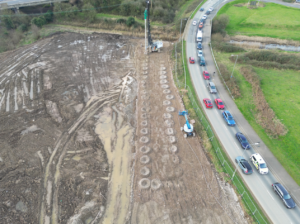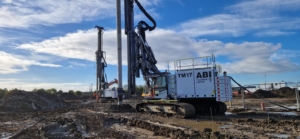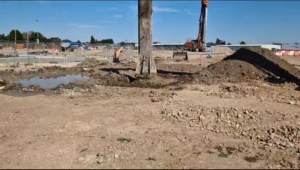CASE STUDY
Client: Octavius
Project: Nar Ouse Enterprise Zone
Kings Lynn
Deep Soil Mixing Ltd has successfully completed a 12-month project for their client Norfolk County Council Highways Department, working for main contractor Octavius, using soil mixing as the ground improvement solution on the new roads on the Nar Ouse Enterprise Zone in King’s Lynn.
The deep soil mixing solution was proposed by Norfolk County Council Highways and the design of the solution was undertaken by Deep Soil Mixing Ltd and Ayesa.
Over the course of approximately one year, Deep Soil Mixing Ltd worked closely with Octavius to deliver the ground improvement solutions needed to prevent long-term settlement of the ground and enable the construction of the new service roads to the new business park and industrial buildings.
As a result of the soil mixing, the soil was strengthened, and its load bearing capabilities increased, to support the construction of roads and service corridors for use in the short- and long-term on the industrial estate.
The Solution
The existing ground on-site consisted of deep layers of peat and lacked the required strength to construct the new service roads and install the infrastructure for the new industrial estate.
The site had been used as a waste tipping ground in the nineteenth century, which meant the materials in the soil varied greatly in terms of consistency. To overcome this challenge, Deep Soil Mixing Ltd adjusted the composition of their soil mixed binders and water content to achieve the optimum soil stability.
Deep Soil Mixing installed a combination of soil mixedslabs together with soil-mixed columns to reduce the long-term ground settlement. The ground was treated to depths of 7.0 to 7.5 metres for maximum stability.
The soil mixing solution kept costs down to a minimum and guaranteed the environmental credentials of the project for the client as there was no need to remove poor ground to landfill.
This in turn improved health and safety on site due to less vehicle movements.
Furthermore, the binder was designed by Deep Soil Mixing Ltd for its low carbon qualities, ensuring the stabilisation of the site could be achieved in the most environmentally friendly way possible.
Soil mixing was also used to support the installation of drainage, the protection of the gas mains pipes and attenuation tanks, and to provide corridors for services needed in the future. This was a vital part of the selection of soil mixing as soil mixing is low in vibration as the ground is mixed with the wet binder at very low pressure, less than 3 bar. Therefore working close to utilities such as gas mains pipes didn’t present any issues. There was minimal vibration recorded on the gas main and well below the criteria specified by National Grid.
The soil mixing started at the end of 2022 and the project took approximately 12-months to complete, costing £2.5million in total.
What are the benefits of using soil mixing?
Environmentally Friendly & Economical: Natural resources are spared as existing soil is used as aggregates. Many forms of contaminated ground can also be mixed which reduces transportation of raw materials to landfill. The use of soil mixing can also reduce construction programme and reduces carbon footprint with less vehicular movements.
Flexible: Effective on different soils, including soft soils, flood plains, contaminated land, peat, silts and alluvium etc. Flexibility also in design and application as well as installation of the soil mix not being affected by the weather. The final cured product can also be shaped, benched or battered to suit.
Reduces Construction Programme
Improved health and safety due to less vehicle movements on site
Reduced Vibration: Soil Mixing induces very low vibrations, which reduces the potential impact to nearby utilities. The equipment does not exert any lateral pressure when mixing we can work as close as 200mm from the building/foundations
Increases bearing pressure, controls settlement and reduces permeability.
Wide range of soils can be treated compared to other solutions
No need to bring costly and bulky materials on site








